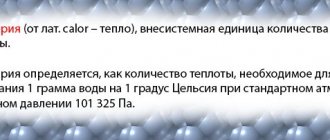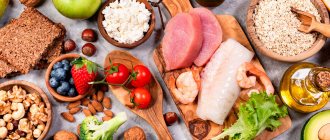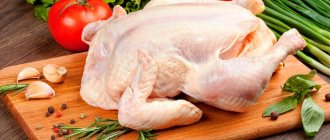© rummess — depositphotos.com
Share:
We continue the topic of creating an individual nutrition plan. In this article we will consider such an important aspect of dietetics as the glycemic load. What is it, how does it affect the preparation of a nutrition plan, and is it true that it is precisely because of its absence in the calculations that many people cannot achieve the desired results?
The concept of glycemic load entered the theory of dietetics not so long ago - namely, with the beginning of research by French scientists within the framework of the general theory of calorie content. According to this theory, correct calculation of BJU taking into account the glycemic index of carbohydrate products will solve the problem of excess weight for people not involved in active physical activity.
But since the technique was imperfect, diets began to appear that lobbied for the consumption of fast food and junk food. It was assumed that such diets would help you lose weight, since they satisfy the basic postulates, and from the right foods you still get the required amount of dietary fat and calories. In practice, everything turned out to be somewhat more complicated, and the diets themselves did not have a significant effect or even led to the opposite results. And it was the study of the glycemic load of foods that made it possible to solve this dilemma.
Metabolic processes of digestion
Before we look at where the glycemic load comes from, let's remember how the body processes incoming carbohydrates during an overall caloric deficit.
- Food, regardless of its type, is fermented in three areas.
- At the same time, already at the stage of gastric digestion, the body rapidly dissolves products that can turn into glucose - a pure source of energy.
- All this leads to an increase in sugar (glucose) levels in the blood.
This is the first stage of carbohydrate processing. Next, under the influence of insulin, glycogen depots are opened, where all the sugar is sent. But few people think about the fact that excessive sugar consumption slows down the destruction of fat tissue. Indeed, in parallel with the increase in insulin production, the production of glucagon, the enzyme responsible for converting glycogen back into glucose, significantly slows down. And if the insulin level depends on the rate of increase in blood sugar, then the glucagon level depends solely on the amount of food taken. Glycemic load regulates the decrease in glucagon levels in the blood, and therefore determines the level and amount of sugar converted into glycogen.
© VectorMine — depositphotos.com. Regulating Blood Sugar Levels
What to use: glycemic index or load?
Of course, the load is easier and more convenient to use. But in some cases it is less indicative and effective than the index, in particular for people with diabetes. The fact is that a diet based on a low glycemic load can be called mixed - on the one hand, full of slow carbohydrates (or meat in which the GN is close to 0), and a portion of fast carbohydrates. The daily distribution is uneven, with large peak values. For diabetics and for weight loss, you need to use both the glycemic index and the load. In this case, you will be able to accurately control your blood sugar levels and the sufficient amount of energy your body needs.
In simple words
Now let’s talk in simple terms about what it is – glycemic load. Considering complex metabolic processes and their dependence on the quantity and quality of carbohydrates, all processes can be simplified to two simple concepts.
- The glycemic index is the rate of absorption of glucose by which foods are broken down.
- And the load itself is the percentage of carbohydrates received from food into the circulatory system.
It's simple - speed and quantity. It is important to understand that the load itself also has a second meaning. Namely, the load on liver cells associated with the consumption of fatty and carbohydrate foods.
The conclusions are as follows:
- The lower the glycemic load, the lower the percentage of pure glucose that is absorbed in the body.
- The lower this indicator, the better the digestive system works.
Editor's note: all metabolic processes and definitions specified in the article are presented in a simplified form for convenience.
Digestion of fats
Fat entering the body passes through the stomach almost intact and enters the small intestine, where there are a large number of enzymes that convert fats into fatty acids. These enzymes are called lipases. They function in the presence of water, but this is problematic for fat processing, since fats do not dissolve in water.
In order to be able to utilize fats, the body produces bile. Bile breaks up fat clumps and allows enzymes on the surface of the small intestine to break down triglycerides into glycerol and fatty acids.
Transporters for fatty acids in the body are called lipoproteins . These are special proteins that are capable of packaging and transporting fatty acids and cholesterol throughout the circulatory system. Next, fatty acids are packaged in fat cells in a fairly compact form, since their assembly (unlike polysaccharides and proteins) does not require water [9].
The proportion of fatty acid absorption depends on the position it occupies relative to glycerol. Those fatty acids that occupy the P2 position are absorbed better. This is due to the fact that lipases have different degrees of effect on fatty acids depending on the location of the latter.
Not all fatty acids supplied with food are completely absorbed by the body, as many nutritionists mistakenly believe. They may not be partially or completely absorbed in the small intestine and may be excreted from the body.
For example, in butter, 80% of fatty acids (saturated) are in the P2 position, that is, they are almost completely absorbed. The same applies to fats that are part of milk and all dairy products that do not undergo the fermentation process.
The fatty acids present in mature cheeses (especially long-aged cheeses), although saturated, are still located in the P1 and P3 positions, which makes them less absorbable.
In addition, most cheeses (especially hard ones) are rich in calcium. Calcium combines with fatty acids to form “soaps” that are not absorbed and are excreted from the body. The ripening of cheese promotes the transition of its fatty acids to the P1 and P3 positions, which indicates their weak absorption [10].
We write in more detail about the types of fats and their characteristics in the article “Fats”.
Authors: Elena Degtyar, PhD; Kardakova Maria, MSc
Literature
1. Mann (2007) FAO/WHO Scientific Update on carbohydrates in human nutrition: conclusions. European Journal of Clinical Nutrition 61 (Suppl 1), S132–S137 2. FAO/WHO. (1998). Carbohydrates in human nutrition. Report of a Joint FAO/WHO Expert Consultation (Rome, 14–18 April 1997). FAO Food and Nutrition Paper 66 3. Holt, S. H., & Brand Miller, J. (1994). Particle size, satiety and the glycemic response. European Journal of Clinical Nutrition, 48(7), 496–502. 4. Jenkins DJ (1987) Starchy foods and fiber: reduced rate of digestion and improved carbohydrate metabolism Scand J Gastroenterol Suppl.129:132-41. 5. Boirie Y. (1997) Slow and fast dietary proteins modulate postprandial protein accretion differently. Proc Natl Acad Sci US A. 94(26):14930-5. 6. Popkin, BM (2012) Global nutrition transition and the pandemic of obesity in developing countries. Nutrition reviews 70 (1): pp. 3 -21. 7. Your Meta Body's bolism 8. About Glycemic Index 9. International table of glycemic index and glycemic load values: 2002 10. Jenkins, DJ, Wolever, TM, Taylor, RH, Barker, H., Fielden, H., Baldwin, J. M., ... & Goff, D. V. (1981). Glycemic index of foods: a physiological basis for carbohydrate metabolism. The American journal of clinical nutrition, 34(3), 362-366. 11. How to use the GI table when creating a menu for diabetics.
How to calculate?
How to calculate the glycemic load indicator? Despite the complexity in definition and important role in drawing up a nutrition plan, a simplified formula allows you to calculate the load as the glycemic index multiplied by the percentage of carbohydrates in the product.
Important: for those who do not have a complete table of all three parameters, advice. Use a pyramid table to calculate missing parameters. For example, having a glycemic load and a glycemic index, you can calculate the percentage of carbohydrate content. Or, having the parameter of glycemic load and percentage of carbohydrate content, you can always calculate the glycemic index. For simplicity, always think of these parameters as a pyramid. By closing the desired parameter, it’s easy to see what to multiply/divide by.
Let's look at an example of determining the glycemic load.
There are 2 products. The first is, say, a high-carbohydrate pastry - a donut containing 80 g of carbohydrates and having a GI of 95. The second is a watermelon, the GI of which is the same 95, but the carbohydrate content is only 6.6 For classical dietetics, which calculates only calorie intake, these products are equivalent. It is only important to consider the amount consumed. But if you calculate the glycemic load of each of them, you can come to the conclusion that a donut has a high glycemic load - about 76, but a watermelon is only 6.27.
© designer491 — depositphotos.com
Why are high GI foods harmful?
An ardent representative is potatoes, which in themselves are not harmful, like other foods containing simple carbohydrates. Their frequent and uncontrolled use is harmful.
There's nothing better than eating a whole banana after a strength workout. The body needs a quick recharge, which the sugars contained in it can handle perfectly. But there is no need to eat them for breakfast or lunch. All you will achieve is to prioritize carbohydrate consumption while protein and fat will replenish your fat reserves and increase your waist size.
They will also cause harm in the case of a sedentary lifestyle, when any acceleration of metabolism will lead to the storage of fats “for a rainy day.” For those with a sweet tooth, now is the time to think about your behavior and learn how to get rid of cravings for sweets.
Save yourself a tip on proper diet
What is the glycemic load indicator for?
Considering the glycemic load of foods and its norms per day, we still have not explained why this parameter is needed for athletes and why it is so important. To understand, let us again delve into biomechanical processes.
The liver can only process a certain amount of sugar at a time. This also applies to insulin production. For example, excessive increase in blood sugar can lead to diabetic disorders with all the negative consequences.
At the same time, it is important to maintain not only a certain level of blood sugar, but also the maximum concentration of energy metabolism throughout the day, avoiding catabolism. Determining and identifying the glycemic load will allow you not only to load with complex carbohydrates, but also to determine their percentage in complex dishes. In turn, this allows you to relieve the liver and increase the absorption of energy substances.
In what cases can this be useful for an athlete?
- When stabilizing weight when taking AS (consumption of protein foods and carbohydrates with a high GI but low GL).
- When creating a caloric deficit using complex carbohydrates.
- To control insulin supply during the keto diet.
- When determining the percentage of carbohydrates in complex dishes.
The main task of the glycemic load parameter, beyond the fight against sugar oversaturation (diabetes), becomes the ability to control not only weight, but also metabolic processes in the body.
How does this apply in practice?
Based on these food parameters, we can understand:
- For what meal is this or that type of product intended? In the morning, the body especially needs energy; breakfast is the most important meal. It is preferable that it contains a large amount of slow carbohydrates, which means foods with a low glycemic index. For lunch and dinner, other principles are used, which we will briefly summarize in a summary table.
| Eating | Optimal GI |
| Breakfast | Short |
| Snack | Medium-high |
| Dinner | Medium-low |
| Snack | Medium-high |
| Dinner | Average |
- From the table above we see that foods with high glycemic load values are not recommended for consumption. From a dietary point of view, they interfere with weight loss, which means they should be excluded from the diet.
- The higher the GI of the ingredients, the faster you will want to eat again, despite the high calorie content of the dish. With low index values, you will stay full much longer, but the portion size will increase slightly.
A clear example of the action of insulin
High and low GBV
As we said earlier, glycemic load is a derived parameter from the glycemic index. It varies as much as the index itself. For example, you can increase the glycemic load by processing the original product.
Let's look at an example:
- Wheat – low load.
- Wheat porridge - the load and index are higher due to the heat treatment of the grains.
- Ground semolina – medium index and higher load.
- Whole grain bread is a finished product with a relatively low GI.
- Flour and flour products – high glycemic load.
- Baked goods with sugar - the glycemic load, as well as the index, are close to 100.
Interesting fact: maltodextrin (molasses), due to its gastrokinetic properties, is the only product that has both a glycemic load and a glycemic index above 100.
Nutrition plan and norms
Knowing the parameters of the glycemic load and its norms per day, I would like to draw a simple conclusion: the lower the daily parameter, the better for the body. However, this is not quite true. Glycemic load, although dependent on the glycemic index, determines the load on the liver and regulates the production of another substance that must be in balance with insulin. The total glycemic load per day, in accordance with dietary standards, should not exceed 100 points. This, in turn, is not entirely true for a person trying to gain weight or lose weight.
The reason why the glycemic load can fluctuate significantly, especially for athletes, is due to the interaction of glucagon and insulin.
Insulin is a hormone that, simply put, perforates cells, thereby lowering blood sugar levels. In accordance with the energy balance in the cells of the body, the following dependence can be traced. If the balance is positive, then when insulin is released, the cells will be refueled with energy, and if there is a calorie deficit, then insulin will deplete the cells. Glucagon regulates the process of converting energy reserves into energy. In other words, if there is a high glycemic load, then this process will be completely stopped, which means that even with a negative energy balance, the breakdown of fat stores or the release of additional energy will be impossible.
Example: if you eat a lot of sweets on a holiday, instead of the expected increase in strength, a person will fall into a sleepy state.
The downside of the glycemic load factor will be possible exhaustion while maintaining a high glycemic index. When, due to an almost completely absent glycemic load, glycogen continues to be converted into glucose, thanks to high insulin levels, this process is accelerated tenfold. In turn, this process leads not so much to weight loss as to exhaustion of the body. This happens when following strict diets.
An example of a violation of norms: a carbohydrate-free mono-diet, which forces you to drink huge amounts of liquid. If you replace a simple liquid with sweet coffee or tea (a teaspoon is enough to create a minimum level of glycemic load at a high index), the period of complete resorption of sugar increases energy costs and leads to glycogen depletion.
So how to properly regulate GL and GI? This process is strictly individual, and depends on the level of production of insulin and other hormones and enzymes. However, there are indicative figures that you can rely on.
- A person leading a sedentary lifestyle - GN from 50 to 80 per day.
- A person leading an active lifestyle – GL from 100 to 120.
- A person involved in sports – GN from 120 to 150.
- An athlete with weight – GN from 150+ with the corresponding GI.
- An athlete on a dry run – GN from 15 to 35.
© IrinaPotter — depositphotos.com. Glycemic index of foods
Protein absorption
The process of digesting proteins requires increased acidity in the stomach. Gastric juice with high acidity is necessary to activate the enzymes responsible for the breakdown of proteins into peptides, as well as for the primary dissolution of food proteins in the stomach. From the stomach, peptides and amino acids enter the small intestine, where some of them are absorbed through the intestinal walls into the blood, and some are further broken down into individual amino acids.
To optimize this process, it is necessary to neutralize the acidity of the gastric solution, and the pancreas is responsible for this, as well as the bile produced by the liver and necessary for the absorption of fatty acids.
Proteins from food are divided into two categories: complete and incomplete.
Complete proteins are proteins that contain all the amino acids necessary (essential) for our body. The source of these proteins is mainly animal proteins, i.e. meat, dairy products, fish and eggs. The exception is soy protein, which is similar in amino acid composition to meat protein. Among cereals, the leader in the content of essential amino acids is quinoa.
Incomplete proteins contain only a portion of the essential amino acids. It is believed that legumes and cereals themselves contain incomplete proteins, but their combination allows us to get all the essential amino acids.
| Therefore, in order for the body to receive all the necessary elements, i.e. the entire spectrum of essential amino acids, it is necessary to eat a varied diet. |
In many national cuisines, the correct combinations leading to adequate protein consumption arose naturally. Thus, in the Middle East, pita with hummus or falafel (wheat with chickpeas) or rice with lentils is common; in Mexico and South America, rice is often combined with beans or corn.
One of the parameters that determines protein quality is the presence of essential amino acids . In accordance with this parameter, there is a product indexing system.
For example, the amino acid lysine is found in small quantities in cereals, and therefore they receive a low score (cereals - 59; whole wheat - 42), and legumes contain small amounts of the essential methionine and cysteine (chickpeas - 78; beans - 74; legumes – 70). Animal proteins and soy receive a high rating on this scale, as they contain the necessary proportions of all essential amino acids (casein (milk) - 100; egg white - 100; soy protein - 100; beef - 92).
| Nutritional density is determined by the amount of energy (calorie content) of a food per gram of weight. Fried potatoes have a higher nutritional density than tomatoes. |
| The nutritional value of a product is an index that determines the amount of beneficial nutrients relative to energy density. Condensed milk has lower nutritional value than oatmeal, although they have the same calorie content. |
In addition, it is necessary to take into account the protein composition , their digestibility from a given product, as well as the nutritional value of the entire product (the presence of vitamins, fats, minerals and calorie content). For example, a hamburger will contain a lot of protein, but also a lot of saturated fatty acids, so its nutritional value will be lower than that of a chicken breast.
Proteins from different sources and even different proteins from the same source (casein and whey protein) are utilized by the body at different rates [5].
Nutrients from food are not 100% digestible. The degree of their absorption can vary significantly depending on the physicochemical composition of the product itself and the products absorbed simultaneously with it, the characteristics of the body and the composition of the intestinal microflora.
Glycemic Load Food Chart
The glycemic load table is always given along with the glycemic index to avoid excess calories or the situations described earlier.
| Name | GI | Number of carbohydrates | GN | Calorie content |
| dry sunflower seeds | 8 | 28.8 | 2.5 | 520 |
| peanut | 20 | 8.8 | 2.0 | 552 |
| broccoli | 20 | 2.2 | 0.2 | 24 |
| mushrooms | 20 | 2.2 | 0.2 | 24 |
| leaf lettuce | 20 | 2.4 | 0.2 | 26 |
| lettuce | 20 | 0.8 | 0.2 | 22 |
| tomatoes | 20 | 4.8 | 0.4 | 24 |
| eggplant | 20 | 5.2 | 0.5 | 24 |
| Green pepper | 20 | 5.4 | 0.5 | 25 |
| White cabbage | 20 | 4.6 | 0.5 | 26 |
| garlic | 20 | 5.2 | 0.5 | 45 |
| bulb onions | 20 | 8.2 | 0.8 | 42 |
| fresh apricots | 20 | 8.0 | 2.8 | 42 |
| fructose | 20 | 88.8 | 20.0 | 480 |
| plums | 22 | 8.5 | 2.2 | 44 |
| pearl barley | 22 | 24 | 5.2 | 205 |
| grapefruits | 22 | 5.5 | 2.4 | 45 |
| cherry | 22 | 22.4 | 2.5 | 48 |
| dark chocolate (60% cocoa) | 22 | 52.5 | 22.5 | 544 |
| walnuts | 25 | 28.4 | 2.8 | 600 |
| skim milk | 26 | 4.6 | 2.4 | 42 |
| sausages | 28 | 0.8 | 0.2 | 225 |
| grape | 40 | 25.0 | 5.0 | 55 |
| green peas. fresh | 40 | 22.8 | 5.2 | 64 |
| freshly squeezed orange juice. sugarless | 40 | 28 | 6.2 | 68 |
| milk 2.5% | 40 | 4.64 | 2.4 | 52 |
| apples | 40 | 8.0 | 2.4 | 46 |
| Apple juice. sugarless | 40 | 8.2 | 4.5 | 48 |
| mamaliga (porridge made from corn flour) | 40 | 22.2 | 8.5 | 84.5 |
| white beans | 40 | 22.5 | 8.5 | 224 |
| wheat grain bread. Rye bread | 40 | 44.8 | 26.5 | 228 |
| peaches | 40 | 8.5 | 2.8 | 44 |
| berry marmalade without sugar. sugar free jam | 40 | 65 | 22.8 | 284 |
| soy milk | 40 | 2.6 | 0.52 | 40 |
| whole milk | 42 | 4.6 | 25.0 | 58 |
| strawberry | 42 | 5.4 | 2.0 | 44 |
| boiled colored beans | 42 | 22.5 | 8.0 | 224 |
| canned pears | 44 | 28.2 | 8.0 | 60 |
| pears | 44 | 8.5 | 4.2 | 42 |
| rye grains. sprouted | 44 | 56.2 | 28.5 | 420 |
| natural yogurt 4.2% fat | 45 | 4.5 | 2.2 | 55 |
| low fat yogurt | 45 | 4.5 | 2.2 | 52 |
| bran bread | 45 | 22.4 | 5.2 | 225 |
| pineapple juice. sugarless | 45 | 25.6 | 6.2 | 58 |
| dried apricots | 45 | 55 | 28.4 | 244 |
| raw carrots | 45 | 6.2 | 2.5 | 44 |
| oranges | 45 | 8.2 | 2.8 | 40 |
| figs | 45 | 22.2 | 4.8 | 48 |
| oatmeal milk | 48 | 24.2 | 6.0 | 202 |
| green peas. canned | 48 | 5.5 | 4.2 | 40 |
| grape juice. sugarless | 48 | 24.8 | 5.5 | 54 |
| wholemeal spaghetti | 48 | 58.4 | 22.5 | 404 |
| grapefruit juice. sugarless | 48 | 8.0 | 4.8 | 45 |
| sherbet | 50 | 84 | 42.5 | 445 |
| kiwi | 50 | 4.0 | 2.0 | 52 |
| bread. pancakes made from buckwheat flour | 50 | 44.2 | 26.2 | 265.4 |
| sweet potatoes (yam) | 50 | 24.5 | 6.4 | 52 |
| tortellini with cheese | 50 | 24.8 | 22.4 | 402 |
| crumbly buckwheat | 50 | 40.5 | 25.4 | 254 |
| spaghetti. pasta | 50 | 58.4 | 28.6 | 404 |
| fluffy white rice | 50 | 24.8 | 24.8 | 224 |
| pizza with tomatoes and cheese | 50 | 28.4 | 22.0 | 228.2 |
| hamburger buns | 52 | 54.6 | 42.8 | 400 |
| Twix | 52 | 54 | 48.2 | 484 |
| sweet yogurt | 52 | 8.5 | 4.4 | 85 |
| ice cream sundae | 52 | 20.8 | 20.8 | 226 |
| wheat flour pancakes | 52 | 40 | 24.8 | 225 |
| bran | 52 | 24.5 | 22.0 | 282 |
| biscuit | 54 | 54.2 | 40.4 | 452 |
| raisin | 54 | 55 | 42.2 | 252 |
| shortbread cookies | 54 | 65.8 | 48.2 | 458 |
| beet | 54 | 8.8 | 5.5 | 48 |
| Pasta with cheese | 54 | 24.8 | 25.8 | 422 |
| wheat grains. sprouted | 54 | 28.2 | 26.8 | 402 |
| semolina | 55 | 56.6 | 44.0 | 428 |
| oatmeal. instant | 55 | 55 | 46.0 | 450 |
| butter cookies | 55 | 65. 8 | 42.2 | 462 |
| Orange juice. ready | 55 | 22.8 | 8.42 | 54 |
| fruit salad with cream. whipped with sugar | 55 | 55.2 | 45.4 | 565 |
| couscous | 55 | 64 | 46.5 | 458 |
| oatmeal cookies | 55 | 62 | 48.2 | 446 |
| mango | 55 | 22.5 | 5.4 | 56 |
| a pineapple | 55 | 22.5 | 6.5 | 48 |
| black bread | 55 | 40.6 | 25.5 | 206 |
| bananas | 55 | 22 | 24.6 | 88 |
| melon | 55 | 8.2 | 5. 8 | 48 |
| potato. boiled "in its uniform" | 55 | 40.4 | 28.8 | 222 |
| boiled wild rice | 56 | 22.44 | 22.2 | 202 |
| croissant | 56 | 40.6 | 26. 4 | 445 |
| wheat flour | 58 | 58.8 | 46. 5 | 444 |
| papaya | 58 | 8.2 | 5.4 | 48 |
| canned corn | 58 | 22.2 | 5.5 | 58 |
| marmalade jam with sugar | 60 | 60 | 48.0 | 255 |
| milk chocolate | 60 | 52.5 | 45.8 | 544 |
| potato starch. corn | 60 | 68.2 | 54. 6 | 444 |
| white rice. steamed | 60 | 68.4 | 55.5 | 452 |
| sugar (sucrose) | 60 | 88.8 | 58. 8 | 468 |
| dumplings. ravioli | 60 | 22 | 25.4 | 248 |
| Coca Cola. Fanta sprite | 60 | 42 | 28. 4 | 20.5 |
| Mars. Snickers (bars) | 60 | 28 | 22.5 | 440 |
| boiled potatoes | 60 | 25.6 | 22. 6 | 82 |
| boiled corn | 60 | 22.2 | 6.8 | 58 |
| wheat bagel | 62 | 58.5 | 42.2 | 284 |
| millet | 62 | 55.5 | 46.2 | 448 |
| ground crackers for breading | 64 | 62.5 | 54.6 | 485 |
| unsweetened waffles | 65 | 80.2 | 50.8 | 405 |
| pumpkin | 65 | 4.4 | 4.4 | 22.4 |
| watermelon | 65 | 8.8 | 5.5 | 48 |
| donuts | 65 | 48.8 | 28. 5 | 285 |
| zucchini | 65 | 4.8 | 4.6 | 24 |
| muesli with nuts and raisins | 80 | 55.4 | 45.0 | 485.5 |
| potato chips | 80 | 48.5 | 48.8 | 542 |
| crackers | 80 | 55.2 | 52.8 | 448 |
| instant rice porridge | 80 | 65.2 | 58.5 | 450 |
| honey | 80 | 80.4 | 62.4 | 424 |
| mashed potatoes | 80 | 24.4 | 22.8 | 64 |
| jam | 82 | 58 | 52.8 | 255 |
| canned apricots | 82 | 22 | 28.2 | 85 |
| instant mashed potatoes | 84 | 45 | 48.2 | 425 |
| baked potatoes | 85 | 22.5 | 20.82 | 206 |
| white bread | 85 | 48.5 | 42.4 | 248 |
| pop corn | 85 | 62 | 52.2 | 482 |
| cornflakes | 85 | 68.5 | 55.8 | 440 |
| French buns | 85 | 54 | 58.8 | 458 |
| rice flour | 85 | 82.5 | 68.4 | 462 |
| boiled carrots | 85 | 28 | 24.6 | 5.2 |
| white bread toast | 200 | 55 | 55.0 | 485 |
| fresh dates | 202 | 58.5 | 58.8 | 262 |
| dried dates | 204 | 62.4 | 64.5 | 405 |
| beer 2.8% alcohol | 220 | 4.4 | 4.8 | 44 |
Recipes for healthy eating
Roasted Brussels Sprouts with Bacon and Cheese
- 4.2 g Protein
- 6.1 g Fat
- 9.3 g Carbohydrates
- 120.1 kcal
30-40 min.
- #bacon
- #Brussels sprouts
- #second course
- #baking
- #greenery
- #lemon
- #low calorie
- #dinner
- #vegetables
- #cheese
- #dinner
Other recipes











